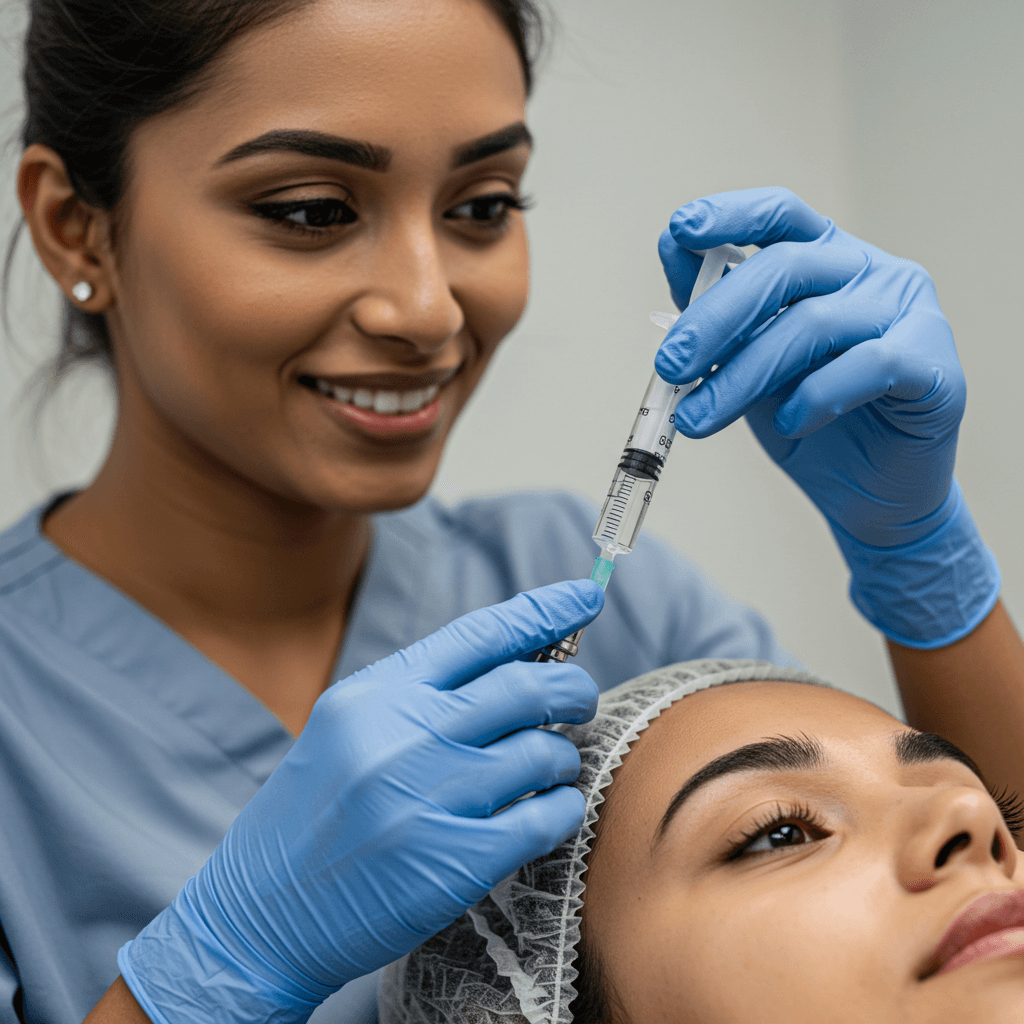Injections are a common part of modern healthcare, from vaccinations to cosmetic procedures. However, one unwelcome side effect that many experience is bruising. Various techniques are purported to minimize bruising, and one such method is the “upside-down injection.” But does injecting upside down really help prevent bruising? Let’s explore this technique and its effectiveness.
Understanding Injection Bruising
Bruising after an injection occurs when the needle damages small blood vessels (capillaries) under the skin. Blood leaks from these damaged vessels into the surrounding tissue, causing the discoloration we know as a bruise. Several factors can influence the likelihood and severity of bruising:
- Injection Site: Areas with more blood vessels or thinner skin are more prone to bruising.
- Needle Size: Larger needles cause more trauma and increase the risk of hitting a blood vessel.
- Injection Technique: Improper technique can increase the chance of vascular damage.
- Individual Factors: Some people are simply more prone to bruising due to genetics, medications, or underlying health conditions.
- Medications and Supplements: Blood thinners like aspirin, ibuprofen, and certain supplements (omega-3s, ginkgo biloba) can increase bleeding and bruising.
What is the ‘Upside-Down’ Injection Technique?
The term “upside-down injection” isn’t a standard, widely recognized medical term. However, it can refer to a couple of different practices related to injections:
- Drawing Medication from a Vial: When drawing medication from a vial, the vial is often held upside down with the needle pointing upwards to ensure the needle tip remains submerged in the liquid while withdrawing the dose. This is to accurately draw the medication into the syringe and minimize air bubbles. This step doesn’t directly relate to preventing bruising at the injection site.
- Needle Bevel Orientation: Some practitioners believe that the orientation of the needle bevel (the slanted opening at the needle tip) during injection can influence bruising. The theory is that injecting with the bevel facing up or down might reduce the likelihood of tearing blood vessels. Some believe that keeping the bevel up may help in some instances.
Does Injecting ‘Upside-Down’ Prevent Bruising?
The evidence supporting the claim that injecting “upside down” (referring to the bevel orientation) prevents bruising is anecdotal and lacks robust scientific backing. There’s no consensus among medical professionals that bevel orientation significantly affects bruising.
While some injectors may find that a particular bevel orientation works better for them in practice, this could be due to a combination of factors, including their overall injection technique, the type of injection, and individual patient characteristics.
Proven Methods to Minimize Bruising
While the “upside-down” injection technique may not be a guaranteed solution, several evidence-based strategies can help minimize bruising:
- Knowledge of Anatomy: A skilled injector will have a thorough understanding of facial anatomy to avoid major blood vessels.
- Use of Cannulas: Cannulas are blunt-tipped instruments that are less likely to puncture blood vessels compared to traditional needles.
- Smaller Gauge Needles: Using a smaller needle reduces the risk of trauma to blood vessels.
- Pre-Injection Precautions:
- Avoid Blood Thinners: Discontinue non-essential blood-thinning medications and supplements (after consulting with a doctor) for a week or two before the procedure.
- Avoid Alcohol and Caffeine: These substances can increase blood flow and the risk of bruising.
- Arnica: Some studies suggest that arnica, a homeopathic remedy, may help reduce bruising and swelling.
- Pineapple: Bromelain, an enzyme found in pineapple, may also have anti-bruising effects.
- During Injection:
- Apply Ice: Applying ice to the injection site before, during, and after the procedure can constrict blood vessels and reduce bleeding.
- Gentle Technique: Inject slowly and avoid excessive force.
- Pressure: Apply immediate pressure to the injection site after withdrawing the needle.
- Post-Injection Care:
- Cold Compress: Continue applying cold compresses to the area for the first 24-48 hours.
- Avoid Strenuous Activity: Refrain from strenuous exercise for a day or two to minimize blood flow to the area.
- Elevate Head: When sleeping, keep your head elevated to reduce pressure and swelling.
- Arnica: Continue using arnica topically or orally.
Injection Types and Techniques
Different types of injections require specific techniques to ensure proper medication delivery and minimize complications:
Subcutaneous Injections
- What it is: Injected into the tissue layer between the skin and muscle.
- Angle: Usually at a 45 to 90-degree angle.
- Technique: Pinch the skin to lift the fatty tissue away from the muscle.
- Uses: For medications that need to be absorbed slowly, such as insulin.
Intramuscular Injections
- What it is: Injected directly into the muscle.
- Angle: Always at a 90-degree angle.
- Technique: Insert the needle with a quick, firm motion.
- Uses: For medications that need to be absorbed quickly, such as vaccines.
Intravenous Injections
- What it is: Injected directly into a vein.
- Angle: Typically at a 25-degree angle.
- Technique: Requires careful insertion to avoid damaging the vein.
- Uses: For delivering fluids and medications directly into the bloodstream.
Additional Tips for a Smooth Injection
Regardless of the injection type, these tips can help ensure a smoother process:
- Clean the Area: Always clean the injection site with an alcohol swab before injecting.
- Use a Sterile Needle: Never reuse needles to prevent infection.
- Dispose of Needles Properly: Use a sharps container to safely discard used needles.
- Rotate Injection Sites: If you require frequent injections, rotate the injection site to prevent skin irritation and damage.
- Stay Hydrated: Drinking plenty of water can help improve skin elasticity and reduce the risk of bruising.
Conclusion
While the idea of an “upside-down” injection preventing bruising is intriguing, it’s not supported by strong evidence. Focusing on proven methods like using skilled injectors, appropriate needle sizes, cannulas, and pre- and post-injection care is more likely to minimize bruising. Always consult with a healthcare professional for the best injection practices and to address any concerns about bruising or other side effects.

